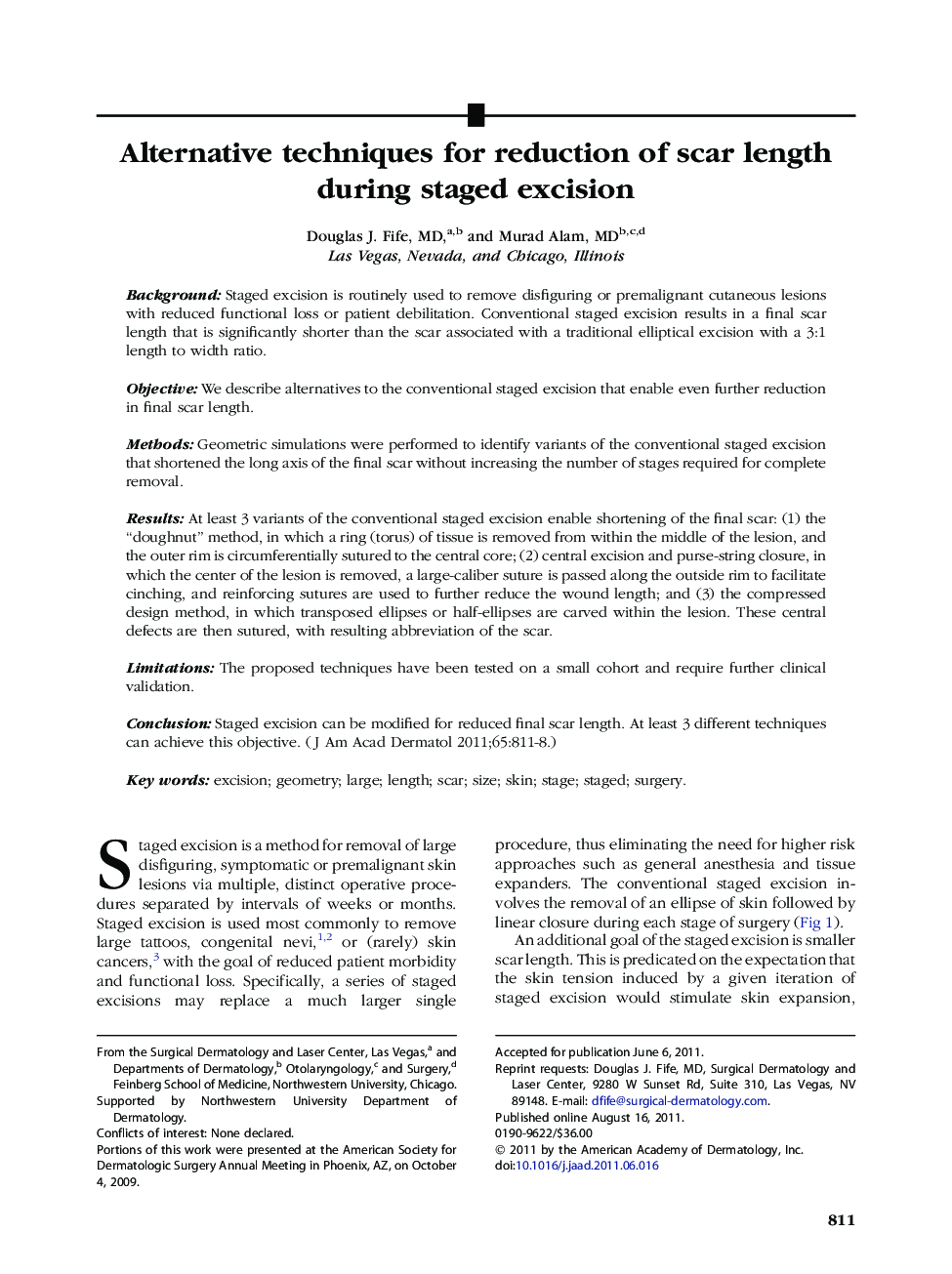| کد مقاله | کد نشریه | سال انتشار | مقاله انگلیسی | نسخه تمام متن |
|---|---|---|---|---|
| 3207662 | 1587574 | 2011 | 8 صفحه PDF | دانلود رایگان |

BackgroundStaged excision is routinely used to remove disfiguring or premalignant cutaneous lesions with reduced functional loss or patient debilitation. Conventional staged excision results in a final scar length that is significantly shorter than the scar associated with a traditional elliptical excision with a 3:1 length to width ratio.ObjectiveWe describe alternatives to the conventional staged excision that enable even further reduction in final scar length.MethodsGeometric simulations were performed to identify variants of the conventional staged excision that shortened the long axis of the final scar without increasing the number of stages required for complete removal.ResultsAt least 3 variants of the conventional staged excision enable shortening of the final scar: (1) the “doughnut” method, in which a ring (torus) of tissue is removed from within the middle of the lesion, and the outer rim is circumferentially sutured to the central core; (2) central excision and purse-string closure, in which the center of the lesion is removed, a large-caliber suture is passed along the outside rim to facilitate cinching, and reinforcing sutures are used to further reduce the wound length; and (3) the compressed design method, in which transposed ellipses or half-ellipses are carved within the lesion. These central defects are then sutured, with resulting abbreviation of the scar.LimitationsThe proposed techniques have been tested on a small cohort and require further clinical validation.ConclusionStaged excision can be modified for reduced final scar length. At least 3 different techniques can achieve this objective.
Journal: Journal of the American Academy of Dermatology - Volume 65, Issue 4, October 2011, Pages 811–818